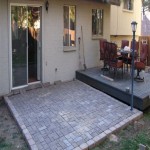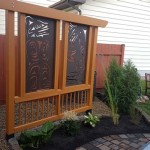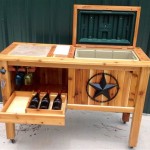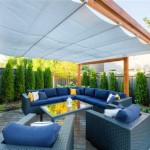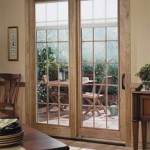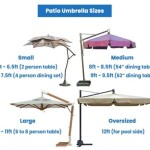Creating A Fun Outdoor Space With Colorful Patio Furniture Ideas
An outdoor space serves as an extension of the home, offering a location for relaxation, entertainment, and enjoyment of the natural surroundings. The design and furnishing of this space significantly impact its functionality and aesthetic appeal. Incorporating colorful patio furniture is a highly effective strategy to inject vibrancy, personality, and a sense of playfulness into any outdoor area. This article explores various ideas for creating a fun outdoor space using colorful patio furniture, highlighting key considerations for selection, arrangement, and maintenance.
Selecting the Right Colors
The selection of colors is paramount when creating a vibrant outdoor space. Color psychology suggests that different hues evoke distinct emotions and set different moods. Understanding these associations can assist in choosing colors that contribute to the desired atmosphere.
Warm Colors: Reds, oranges, and yellows are considered warm colors. These colors are associated with energy, excitement, and enthusiasm. Incorporating these colors into patio furniture can create a lively and inviting atmosphere. For example, bright red cushions on chairs or an orange side table can add a pop of color and warmth to the space. However, it is advisable to use warm colors judiciously, as excessive use can be overwhelming.
Cool Colors: Blues, greens, and purples are cool colors, often associated with calmness, tranquility, and relaxation. These colors are ideal for creating a serene and peaceful outdoor retreat. Blue cushions on a chaise lounge or a green dining set can evoke a sense of nature and promote relaxation. Cool colors tend to blend seamlessly with the natural environment, making them an excellent choice for outdoor spaces intended for relaxation.
Neutral Colors: Whites, grays, and beiges serve as excellent background colors and can be used to balance more vibrant hues. Neutral furniture pieces provide a canvas upon which colorful accents can shine. For example, a gray sofa can be paired with brightly colored cushions and throw pillows. This approach allows for flexibility in changing the color scheme over time without replacing the entire furniture set.
Consider the existing color palette of the surrounding landscape when choosing colors for patio furniture. Matching or complementing the natural colors of the garden, trees, or nearby structures can create a cohesive and harmonious design. It's important to remember that the intensity of sunlight can affect the appearance of colors outdoors. Lighter colors may appear washed out in direct sunlight, while darker colors can absorb more heat.
Furniture Materials and Durability
The choice of materials for outdoor furniture plays a crucial role in its durability, maintenance requirements, and overall aesthetic. Different materials offer varying levels of resistance to weather conditions, fading, and wear and tear. Selecting the right materials ensures that the colorful patio furniture retains its vibrancy and functionality for years to come.
Aluminum: Aluminum is a lightweight and rust-resistant material, making it an excellent choice for outdoor furniture. It can be powder-coated in a wide range of colors, allowing for extensive customization. Aluminum furniture is easy to clean and maintain, requiring only occasional washing with soap and water. However, it can become hot in direct sunlight, so it is advisable to use cushions.
Wicker: Wicker is a traditional material that is often associated with outdoor furniture. Natural wicker is made from plant fibers and is susceptible to damage from moisture and sunlight. Synthetic wicker, on the other hand, is made from resin and is much more durable and weather-resistant. It comes in a variety of colors and textures, offering a versatile option for creating a colorful outdoor space. Synthetic wicker furniture is easy to clean and requires minimal maintenance.
Plastic: Plastic is a cost-effective and durable material that is available in a wide range of colors and styles. It is resistant to moisture, fading, and cracking, making it a suitable choice for outdoor furniture. However, plastic furniture can sometimes appear less sophisticated than furniture made from other materials. Recycled plastic is an environmentally friendly option that offers the same durability and aesthetic appeal as virgin plastic.
Wood: Wood furniture offers a natural and elegant look, but it requires more maintenance than other materials. Teak, cedar, and redwood are naturally weather-resistant and can be used outdoors with minimal treatment. However, they will eventually weather to a gray color if not regularly sealed or stained. Painted wood furniture can add a pop of color to an outdoor space, but the paint will need to be reapplied periodically to prevent chipping and fading.
Regardless of the material chosen, it is essential to select furniture that is specifically designed for outdoor use. Look for furniture that is treated to resist moisture, UV rays, and pests. Consider purchasing furniture covers to protect it from the elements when not in use.
Arrangement and Layout
The arrangement and layout of patio furniture significantly impact the functionality and flow of the outdoor space. A well-planned layout can maximize the usability of the space and create distinct zones for different activities, such as dining, lounging, and socializing. When arranging colorful patio furniture, consideration should be given to factors such as traffic flow, sunlight exposure, and available space.
Consider the Function: Determine the primary purpose of the outdoor space. Is it intended for dining, lounging, entertaining, or a combination of these activities? Create distinct zones for each function. For example, a dining area may include a table and chairs, while a lounging area may feature sofas, armchairs, and a coffee table. A bar area might include high-top tables and bar stools.
Maximize Space: Assess the available space and choose furniture that is appropriately sized. Avoid overcrowding the space, as this can make it feel cramped and uncomfortable. In smaller spaces, consider using multi-functional furniture, such as a coffee table with built-in storage or a folding dining table. Modular furniture can also be arranged in a variety of configurations to suit different needs.
Optimize Traffic Flow: Ensure that there is sufficient space for people to move freely around the furniture. Avoid placing furniture in areas where it will obstruct pathways or create bottlenecks. Consider the placement of doors, gates, and other access points when planning the layout.
Account for Sunlight and Shade: Consider the direction of sunlight and the availability of shade when arranging patio furniture. Place seating areas in shaded locations or provide shade with umbrellas, pergolas, or trees. Position furniture in a way that minimizes glare and prevents occupants from being exposed to direct sunlight for extended periods of time.
Create a Focal Point: Establish a focal point in the outdoor space to draw the eye and create a sense of visual interest. This could be a colorful piece of furniture, a water feature, a sculpture, or a planting bed. Arrange the furniture to direct attention towards the focal point.
Incorporate Accessories: Accessories such as cushions, throw pillows, rugs, and planters can enhance the comfort and aesthetic appeal of the outdoor space. Choose accessories that complement the colors and style of the patio furniture. Use outdoor rugs to define different zones and add texture to the space. Plants can add greenery and create a more inviting atmosphere.
Incorporating Colorful Accessories
While colorful patio furniture forms the foundation of a vibrant outdoor space, the strategic use of accessories amplifies the overall effect and adds layers of visual interest. Accessories provide an opportunity to introduce pops of color, patterns, and textures that complement the furniture and reflect personal style.
Cushions and Throw Pillows: Cushions and throw pillows are a simple and effective way to add color to patio furniture. Choose fabrics in bright, bold colors or patterns that complement the furniture's color scheme. Consider using a mix of solids and patterns to create a dynamic and visually appealing display. Look for outdoor fabrics that are resistant to fading, moisture, and mildew.
Outdoor Rugs: Outdoor rugs can define seating areas and add texture to the outdoor space. Choose rugs in vibrant colors or patterns that complement the furniture and accessories. Look for rugs made from durable, weather-resistant materials such as polypropylene or recycled plastic. Outdoor rugs are available in a variety of sizes and shapes to suit different outdoor spaces.
Planters and Flowers: Planters and flowers can add greenery and color to the outdoor space. Choose planters in bright colors or interesting shapes to add visual interest. Consider using a variety of plants with different colors and textures to create a dynamic and visually appealing display. Plant flowers in colors that complement the furniture and accessories.
Lighting: Outdoor lighting can create a warm and inviting atmosphere in the evening. Choose lighting fixtures in bright colors or interesting shapes to add visual interest. Consider using string lights, lanterns, or spotlights to illuminate the outdoor space. Solar-powered lights are an environmentally friendly option that requires no wiring.
Tableware and Serveware: Colorful tableware and serveware can add a festive touch to outdoor dining. Use plates, glasses, and serving dishes in bright colors or patterns that complement the furniture and accessories. Consider using melamine tableware, which is durable and shatter-resistant.
Artwork and Decor: Outdoor artwork and decor can add personality and style to the outdoor space. Choose pieces that reflect personal taste and complement the furniture and accessories. Consider using weatherproof artwork, such as metal sculptures or ceramic planters. Outdoor mirrors can create the illusion of a larger space.
By carefully selecting and arranging colorful accessories, it is possible to create a fun and inviting outdoor space that reflects personal style and enhances the enjoyment of the natural surroundings.

26 Best Patio Decorating Ideas Decor On A Budget

5 Design Essentials Every Backyard Should Have
A Designer S Guide To Creating Your Dream Outdoor Space

Colorful European Inspired Backyard Refresh Nesting With Grace

26 Best Patio Decorating Ideas Decor On A Budget

14 Ideas For Creating A Backyard Oasis

74 Best Patio Decor Ideas For Any Outdoor Space

16 Patio Furniture Ideas That Will Make Your Backyard A Destination

58 Small Patio Ideas That Maximize Your Space In 2025

Fun Ideas To Make Your Patio Feel More Like A Living Room
Related Posts

